The Honda City has been a popular sedan in India since the time it was first introduced here. Since then, it has undergone generation changes and now, there’s a 5th-gen model which will attempt to retain the sedan audience.
The new Honda is now up against a feature-packed rival in the form of the Verna and a value-oriented product like the Ciaz. In addition to that, there’s an army of equally-priced compact SUVs which has been slicing into the desire for 3-box vehicles for quite some time now. Packed with many new features and a renewed appearance, has the 2020 Honda City been armed with what it needs to defend its ground? A comprehensive video review embedded below will answer all your questions in Hindi. A timestamp will also help you to head directly to the part which interests you most. But if you don’t mind reading, carry on…
Design, External Features & Dimensions (00:00 To 12:28)
Until now, it was the Maruti Ciaz which took pride in being the widest and the longest sedan in the C-segment. That distinction has been snatched by the new City. Compared to the previous-gen car, the new City is 53mm wider and 103mm longer. This has been done so that there’s more space inside and a boost to the presence outside. The end result? The new-gen Honda City now reserves the most square feet area in its class.
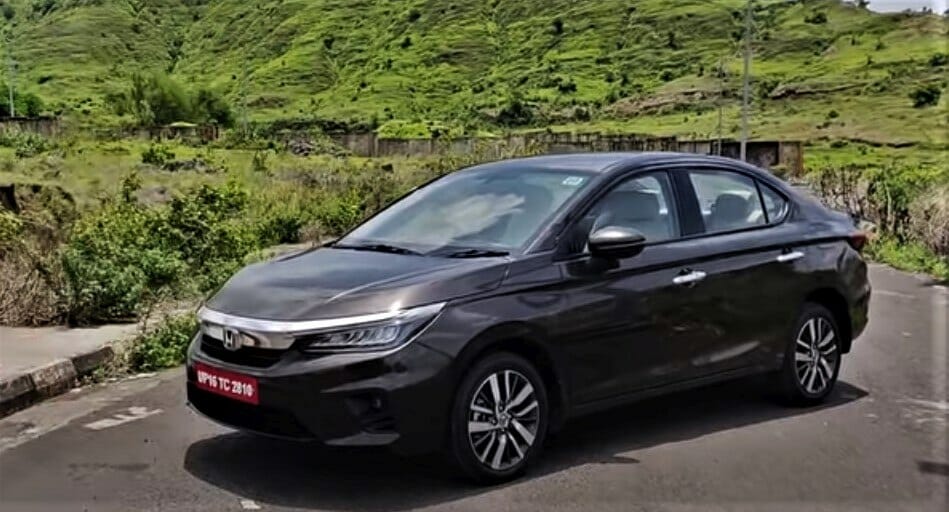
In terms of design, the changes aren’t revolutionary and the new car appears more like an evolution of what it used to be. The highlight here is the fascia, which is now more upright and graced with a large chrome applique which widens in the centre and extends above the headlamps to add width to the visuals. The all-LED headlamps add that much-needed modern charm to this Honda with nine individual lighting elements, reminding us of the new-age robotic glint which first appeared on the 2016 Honda Accord. Among the nine, six outside elements light up on low beam while the inner three fire up for the high beam. Turn indicators, fog lamps and DRLs are all-LED too!
The bonnet features two character lines which address the issue with the previous-gen car, where many owners complained that they weren’t able to see how far the bonnet extended and had to guess the front end’s length while driving in bumper-to-bumper traffic. Sideways, one would notice that the headlamp unit extends quite deep into the side fenders and then, a crisp crease runs through the shoulder line until it meets the new tail lamp, which also juts out into the side profile.
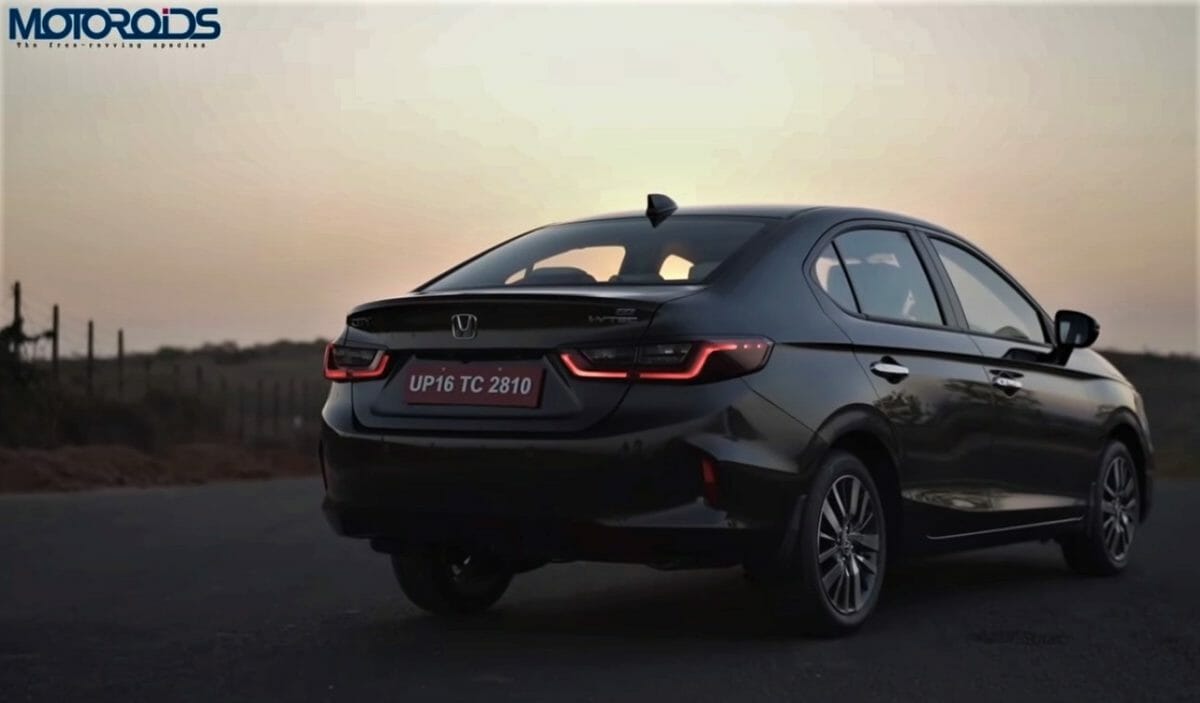
The new Honda City is underpinned by the same structure which the international-spec Honda Jazz is based upon. However, the shell is more or less the same as the one on which the 4th-gen sedan is based. Under the hood, insulation is now thicker for better NVH and extensive usage of reinforced steel adds more rigidity to the structure. The new-gen City is 4.5 kilos lighter than the old-gen car, however, torsional rigidity has gone up by 20.4%.

Ground clearance stands at 165mm and the 16″ alloy wheels even on the top-spec variant is wrapped in Bridgestone Ecopia 185 section rubber. We think the width could have been better. Keen eyes would also notice that the side mirror has been pulled back to improve visibility and the unit on the left now comes fitted with a blind spot monitoring camera. Doors open wide and with the heft with which they swivel does add to the assurance of a solidly-built car.
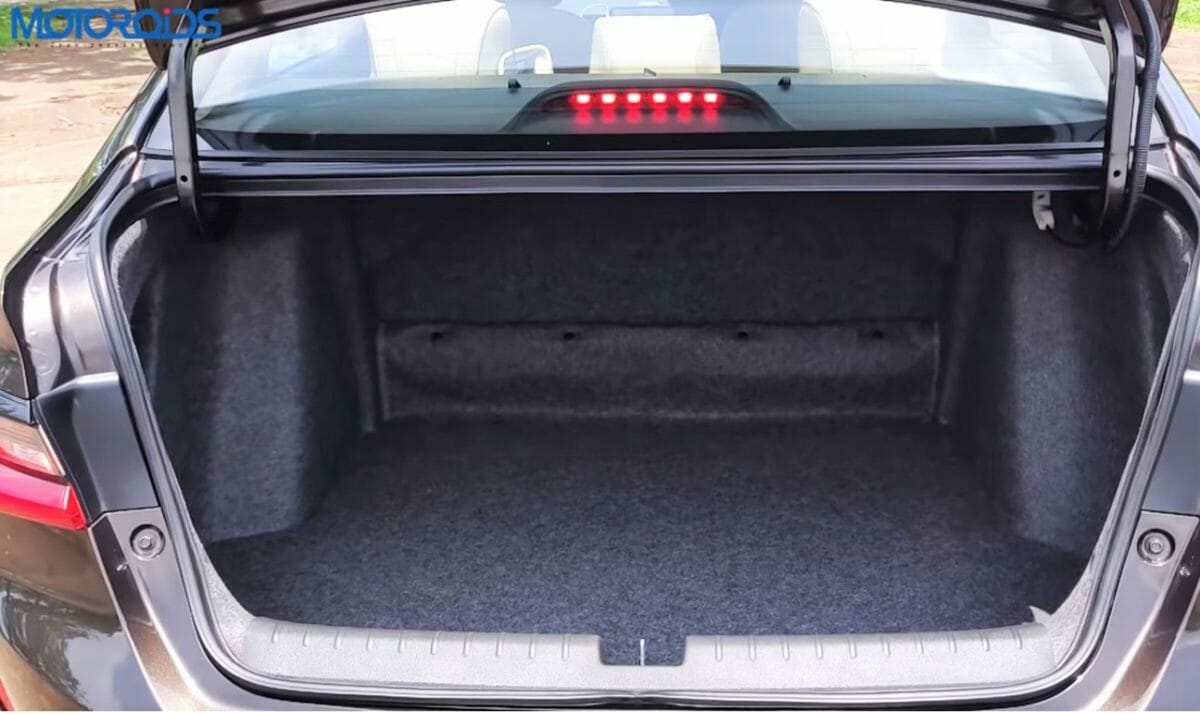
At the rear, the width is again emphasized by horizontally-placed taillights which are lit by LED units. The trunk lid does flatten out where the rear glass ends, to highlight the City’s proper 3-box proportions and there’s a slight rise near the lip area to add a dash of sportiness. At 506 litres, boot space is plenty, however, the loading lip is slightly on the higher side. Surprisingly, our test car, a top-spec variant, came fitted with a full-size spare tyre wrapped around an alloy wheel!
Cabin And Features (12:28 To 33:13)
Keyless locking and unlocking allow you to enter the cabin with the key inside your pockets. The seats on the top-spec trim are dressed in leather and are wide and well contoured. Even the adjustable headrests relay a visually healthy dose of plush. The driver’s chair is manually height adjustable and the leather-wrapped steering wheel can also be adjusted for rake and reach. As a result, attaining your preferred driving position is easy. What could’ve elevated comfort and support even further though is the addition of lumbar support.
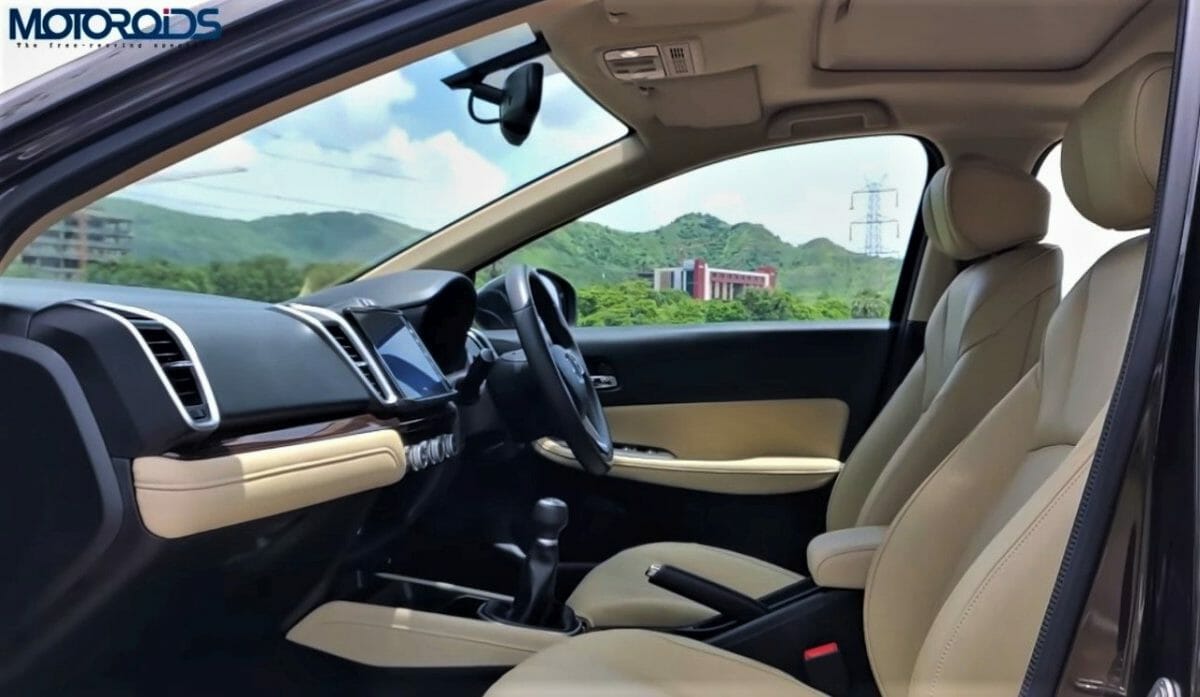
All four windows are powered and go up or down with a single touch of the button. Armrests on the door pad for front passengers are draped in soft-touch leather, which adds to the premium quotient and makes up for the black plastic which is quite prominent otherwise. Right next to the start/stop switch is the new semi-digital instrument cluster which includes an analogue dial for the speedometer on the right and a 7″ digital screen for the rev counter and drive-related information. The fuel gauge is digital too and sadly, there’s no inclusion of an analogue temperature gauge. An interesting addition though is a ‘G’ meter which should help the driver to go easy if he or she is driving too enthusiastically when there are passengers on board.
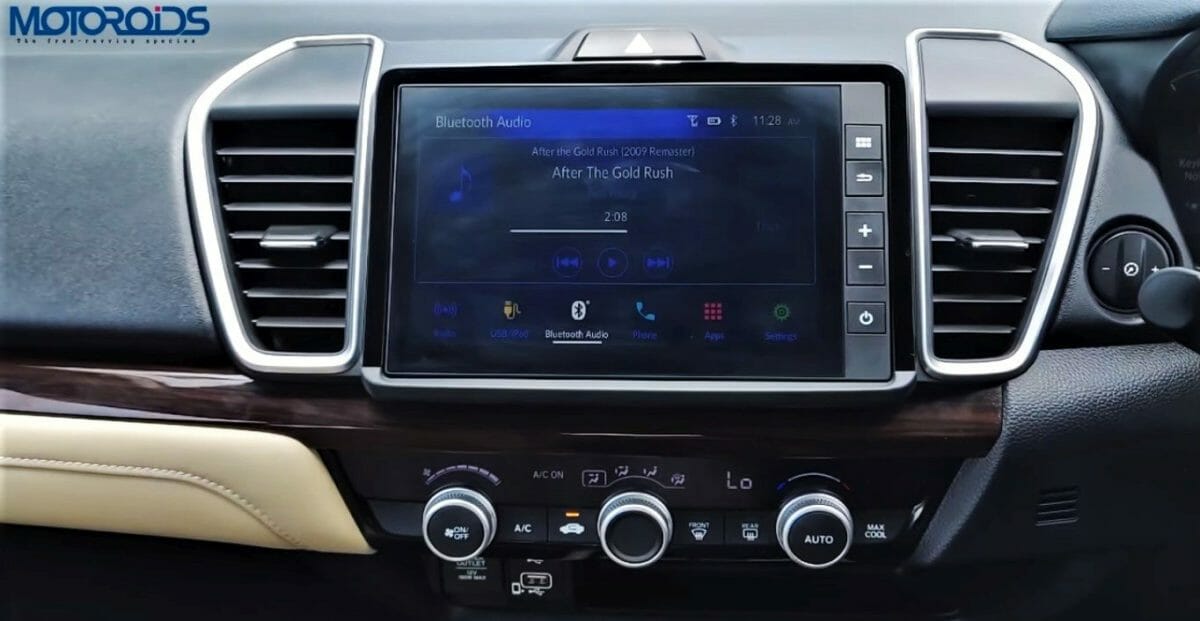
The vertical design for AC vents is new and in the centre, there’s an 8″ infotainment system which is Apple CarPlay and Android Auto-compliant, and also features Honda’s Weblink functionality. The 2020 Honda City is a connected car now and can be paired with an Alexa device to control the car’s air-conditioning, boot release, ignition, view the car’s service history, check battery, fuel and tyre status, make the car honk, all through voice commands. However, this functionality is only available with the City’s CVT-equipped variants.
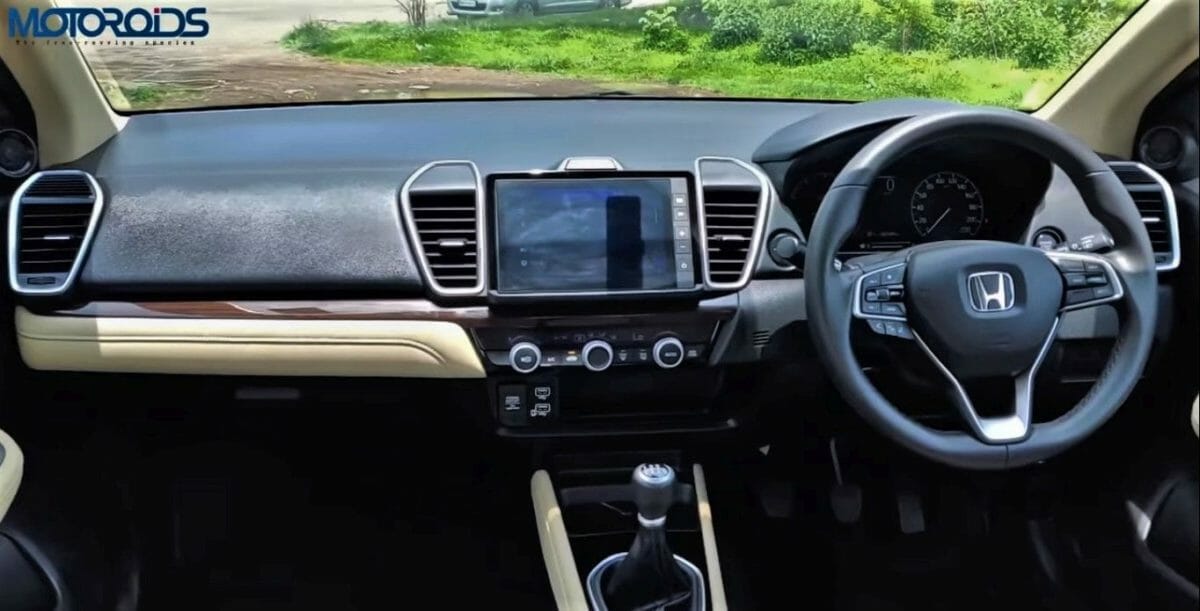
But if you are buying a manual gearbox version, the Honda Connect feature makes up for the lack of Alexa. This connected-car tech offers 32 features, including geofencing, roadside assistance, remote headlight operation and lots more. The infotainment system’s sound quality is decent, however, once the volume exceeds normal levels, there’s some distortion which comes to the fore. The screen in the centre also doubles up as a display for the camera on the left ORVM. It can be activated through a button on the right-hand-side stalk or by switching on the indicator on the same side.
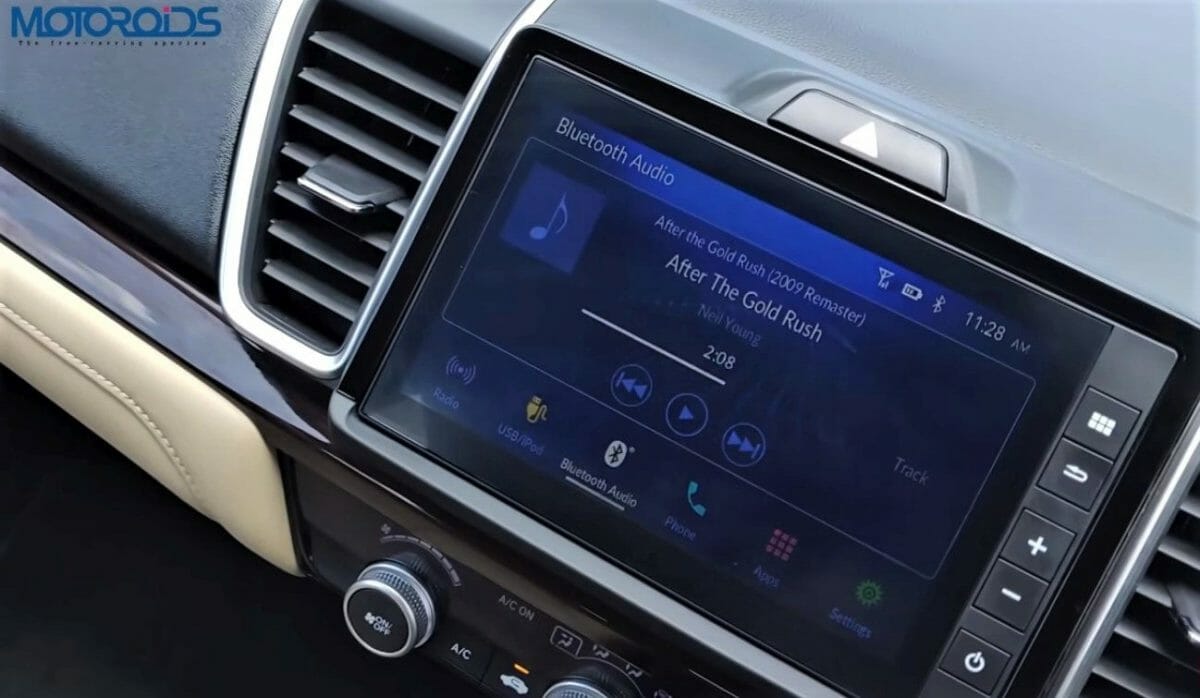
The infotainment screen’s brightness and contrast levels could have been better, as things do wash out when the sun’s out shining bright. Also, the rear camera feed could’ve been better in terms of resolution. Underneath the AC control panel, there’s storage space for a phone or something else along with two USB sockets and a 12V power socket. There’s more space in front of the two cupholders and then some more underneath the centre armrest (not a sliding unit) and underneath and next to the hand brake. The glovebox isn’t the largest out there and unfortunately, there’s no cooling function.
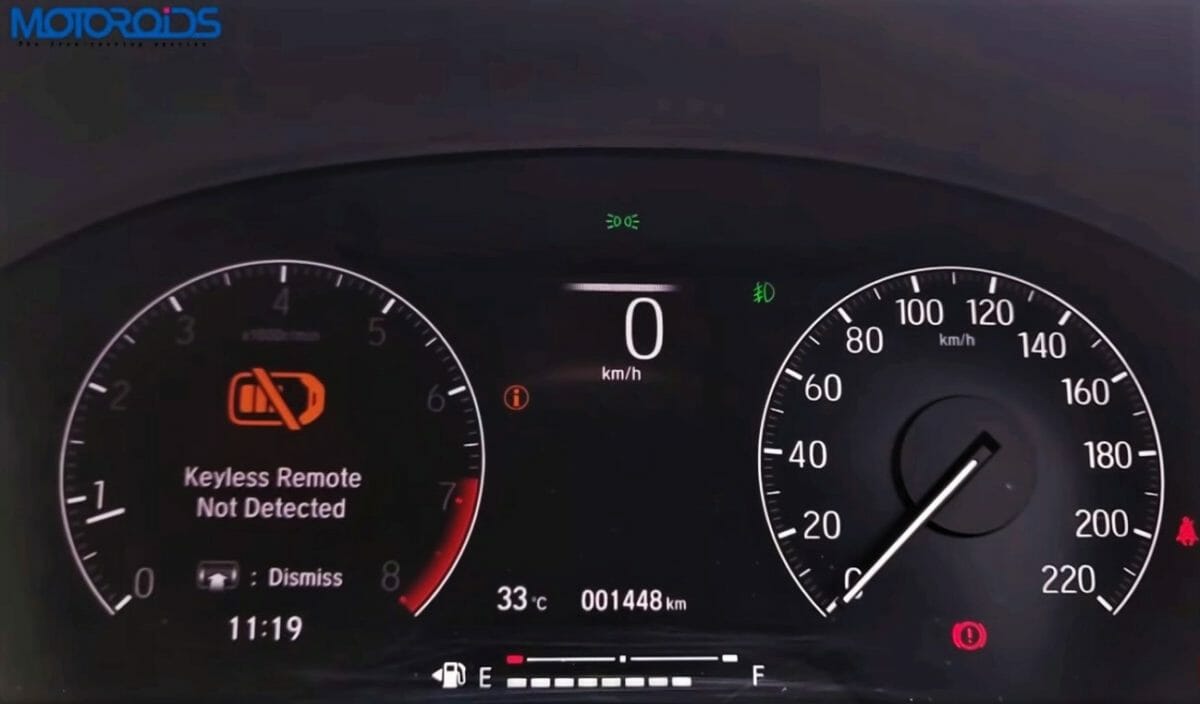
In terms of safety, there’s VSC, ABS and a traction control system which can be switched off. There are as many as 6 airbags on the top-spec version. In terms of workmanship, the usage of materials and fit-n-finish is par for the course, however, certain things like the AC control dials do stand out even more for the crispness they rotate with. Front seatbelts aren’t adjustable for height, although the ORVM is of the auto-dimming type. Overall, the cabin feels functional, comfortable and has rich inserts and features which add the right amount of new-age. Visibility and ergonomics are great too.

Coming to rear-seat comfort, the doors open wide, making ingress and egress easy. The bench on its own isn’t too low either, which should make it easy for the elders in your house to get in and get out. Like the front doors, the rear doors too, have leather padding and bottle holders. Once seated, knee room and legroom is plenty even for 6 footers. The opulent usage of beige brightens up the cabin and the rear seat offers excellent under-thigh support in addition to the more than ample space. The backrest angle is ideal and all three passengers in the rear get their individual headrests, although they aren’t adjustable.
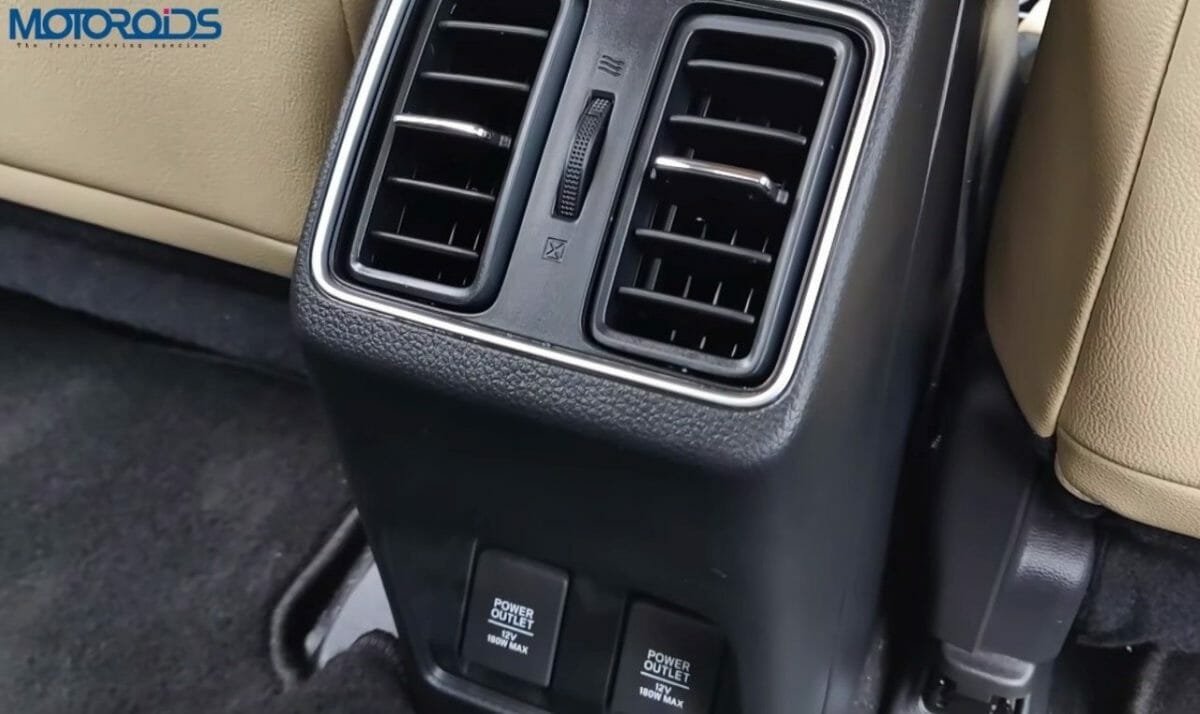
There’s a centre armrest which has two cupholders, rear AC vents with a dial to control flow, two 12V sockets, and the front seat backrests do have magazine holders. The reading lights are lit by LEDs and there’s a sunblind on the rear windscreen when it gets too sunny. Overall, we think the Honda City trumps its closest competitor, the Hyundai Verna by miles when it comes to backseat space and comfort and that is a big draw for the Indian audience.
Engine And Performance (33:14 To 41:05)
It would be fair to say that quite a large number of buyers bought the Honda City for its i-VTEC engine and its free-revving characteristics. Like the 4th-gen version, the 2020 Honda City continues with BS6 compliant petrol and diesel engines. The petrol motor is a 1.5-litre i-VTEC unit which delivers 121 PS at 6,600 rpm and 145 Nm at 4300 rpm. It can be specced with a 6-speed manual or a CVT unit as optional. In the MT configuration, it has been rated to return 17.8 kmpl of fuel economy, while with the CVT that number goes up to 18.4 kmpl On the other hand, the 1.5-litre i-DTEC has been rated to crank out 100 PS of power at 3,600 rpm and 200 Nm at 1,750 rpm. It will be available with only a 6-speed manual gearbox and will deliver 24.1 kmpl in terms of fuel economy.
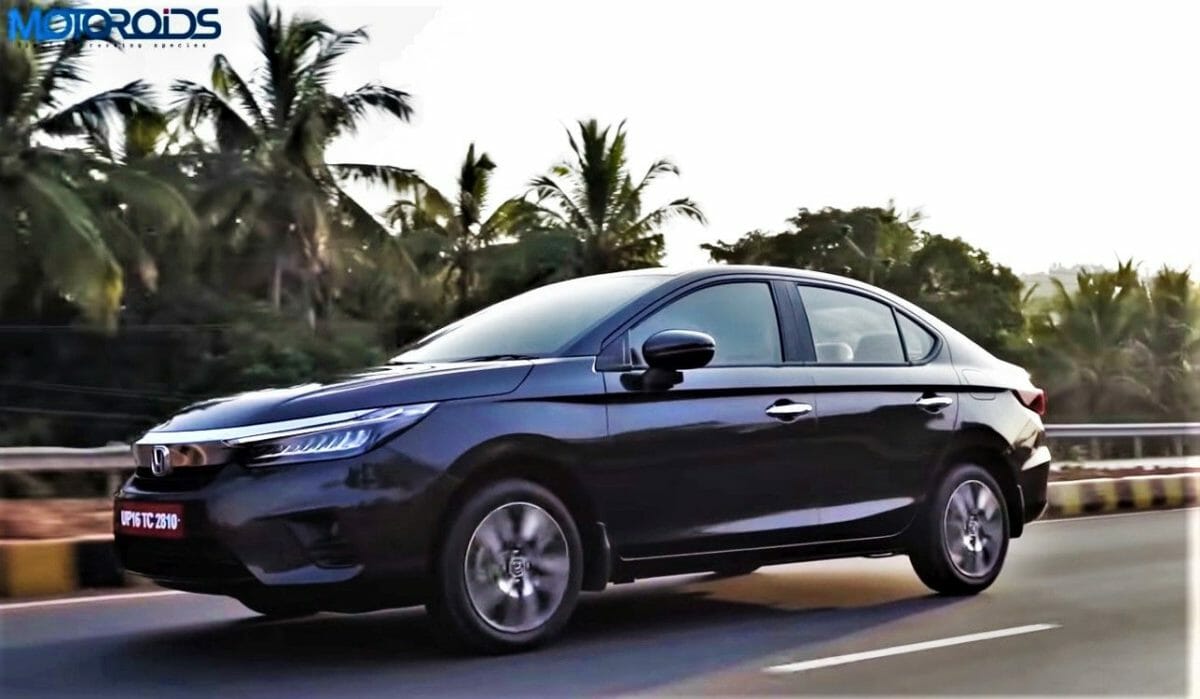
Starting with the petrol manual first, the 1.5-litre engine has been tweaked for gains in refinement, driveability and fuel efficiency. The inclusion of anti-friction technologies, a dual-overhead-cam and a better fueling technique does result in a positively perceptible difference when it comes to on-road performance. Unlike small-capacity turbocharged engines, the naturally-aspirated engine doesn’t make you wait until the turbo spools and then power is dished out in a limited band. Here, usable power starts coming in right from the 1,000 rpm mark and keeps building in a linear manner. The motor revs cleanly until its 7,000 rpm limit and once it crosses the 3,500 mark, there’s a pleasant aural note which finds its way inside the cabin. Although Honda has tweaked it to make it better, the engine’s original character hasn’t changed and it still is that rev-happy unit for which it has been showered with so much affection.
Honda has also tweaked the steering system, suspension and the chassis, which has resulted in the new City relaying a sense of stability when it’s driven at high speeds. The improved steering system feels well-weighted and there’s a decent amount of feedback that comes through too. What that has done to the City now is that where only the engine shone brightest for enthusiasts in the older generation car, the steering system is now a proper ally when it comes to driving pleasure.
In terms of fuel efficiency, the petrol-powered manual version we drove registered a number between 16 – 17 kmpl when the car was driven on the highway and about 12 kmpl within the city. Those numbers could vary by +/- 2 to 4 kmpl, depending on traffic conditions and driving style. We’d like to add that the comprehensive measures taken by Honda to improve NVH have resulted in the new City impressing us thoroughly in terms of refinement. Coming back to performance, the 1.5-litre petrol engine with a manual gearbox took a little over 10 seconds during our 0 – 100 kmph run, achieving that speed in second gear, with two people inside the car.
For those who’d like to know, the new Honda City cruises at an indicated 100 kmph in sixth gear at 2,500 rpm and maintains that same speed at 2,800 rpm in 5th gear. First gear maxes out at an indicated 57 kmph while the second cog is good enough to register 106 kmph. But get this, the third cog takes the new City up to 158 kmph! Peak power rings in at 6,600 rpm and the limiter cuts in at a high 7,000 clicks. Since we’re talking about gears, the lever slots into position in a butter-smooth manner and allows the driver to row through the box as swiftly as he or she would like. Coupled with a clutch pedal which feels light on the foot and offers an optimal biting point, the new City is seriously impressive as a driver’s car.
Suspension And Handling (41:06 To 42:43)
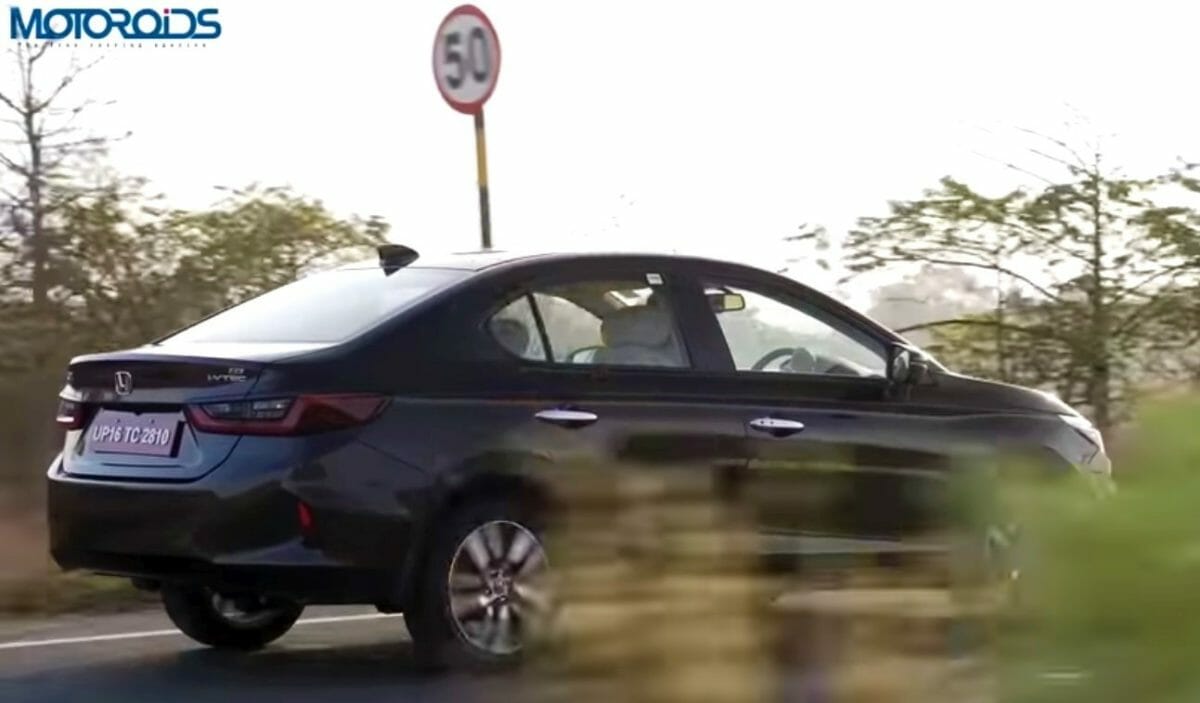
Honda has tweaked the chassis to make it more rigid and the suspension to add to the engine’s brilliance. As a result, the new Honda City’s ride and handling characteristics are a step above the outgoing car. Low-speed ride quality has become a tad firmer, although still not as firm as some European cars. The upside to that is handling has improved. However, Honda has managed to achieve a fine balance between ride comfort and predictable handling characteristics which will please the driver. The front disc and rear drum braking setup feels enough for the performance on tap, although all four discs would’ve added to the driver’s confidence.
Diesel Engine Performance (42:44 To 48:27)
The diesel engine powering the 2020 Honda City cranks out identical power, compared to the BS4 version which propelled the older-gen car. The diesel engine doesn’t require timely addition of a separate fluid to keep emissions in check and remains one of the most efficient diesel engines out there. It isn’t the most powerful unit on paper, but scores high on driveability and many would like to know if Honda has made any changes to improve refinement? The answer to that is, yes. Honda has worked on making the engine quieter, and inside the cabin at least, the diesel engine’s presence isn’t felt as prominently as it used to be on the previous-gen car.
The older-gen, diesel-powered City also felt nose-heavy and on not-so-perfect roads, the front end tended to move vertically and dive quite a lot under braking. That has been taking care and although it still feels a little nose-heavy, compared to the older-gen car, things are definitely better. The diesel-powered City now feels more natural to drive and paired with the improved steering system, it turns in quite nicely around bends. The diesel engine delivers strong performance in the low and mid-range, however, top-end performance isn’t one of its strong points. Like the older-gen car, even here, it spins comfortably at 1,900 rpm in 6th gear and is a relaxed performer as long as you don’t push it like it’s the i-VTEC motor.
Petrol CVT Performance (48:28 To 50:56)
If you’re someone who rarely leaves the urban environment, the CVT-equipped Honda City will appeal to you. Like most such units, the rubber-band effect is there to be felt, however, it isn’t as pronounced as we’ve experienced elsewhere. There’s a ‘Sport’ mode for the lever which makes the transmission move into a higher ratio quickly and at higher engine speeds, although if you wish to override the system’s logic, you may choose to use the pedals behind the steering wheel. With this option then, there’s a Honda City for everyone. The petrol manual for the enthusiast, the diesel-powered version for those who want something fuel-efficient and relaxed, and the CVT version for those who prefer convenience over everything else.
In Conclusion

In addition to the premium Honda badge, as a sedan and on its own, the Honda City is a strong competitor in its segment. Probably the strongest if you consider everything that has been improved upon and everything that was already brilliant. The 1.5-litre i-VTEC engine continues to be a charmer and is without a doubt the engine to beat in this category. Along with all the improvements, new additions, the option of a diesel engine and that CVT, the 2020 Honda City is a complete package now. The only thing that remains is how Honda decides to price this new sedan. We’ll be back with those details soon when the car is formally launched. Keep an eye.
